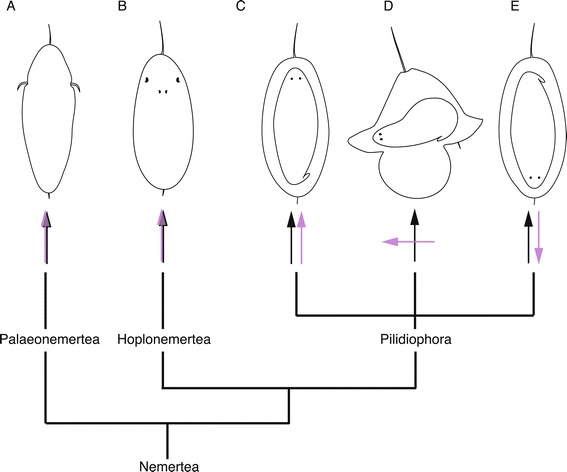Figure 1.

Distribution of larval types and larval-juvenile axial orientations among major Nemertean clades. Phylogeny (bottom) shows relationships among three major nemertean clades. Above: orientation of anteroposterior (AP) axis of larva (black arrows) and juvenile (purple arrows) of (A) a typical palaeonemertean larva, (B) a typical hoplonemertean larva, and (C) the larva of pilidiophoran Micrura rubramaculosa [62], in which the larval and juvenile AP axes coincide; (D) a typical pilidium, in which larval and juvenile axes are roughly perpendicular; and (E) the larva of M. akkeshiensis, in which larval and juvenile AP axes oppose one another.
